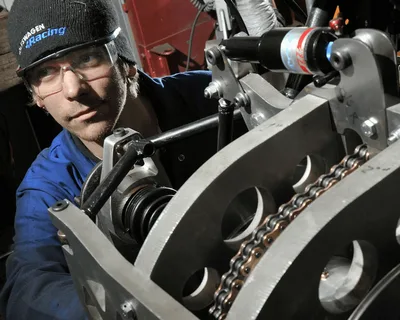Recent advances in machine learning techniques have opened up a wide range of possibilities for solving long-standing mechanical issues and creating novel materials design approaches. First, we provide a brief overview of contemporary ML models, methods, and structures in this study of machine learning for mechanical engineers.
The significance of data collection, creation, and preparation is next covered. Following a summary of the applications in computational techniques, materials design, and mechanical property prediction utilizing ML-based methodologies, thoughts on potential and open issues in this new and fascinating subject are presented.
Manufacturing AI & ML Applications
Design and Production
Our professionals are altering and improving design and production with machine learning and artificial intelligence technologies. Here are a few instances: using design DNA to create new designs for cars and aeroplanes, utilizing computer vision to find flaws in 3D prints; transforming static illustrations into active simulations; and creating engineering simulations for virtual reality to immerse students in the manufacturing process.
Autonomous automobiles
A self-driving automobile was previously thought of as a vision of the future. Autonomous cars are a reality today. How can we guarantee the safety of these cars in parking lots, on roads, and at intersections?
Our expertise combine simulations, unstructured active perception, the development and testing of sophisticated physical systems, and machine learning to allow self-manoeuvering cars to be more innovative and safer.
Technology that enhances product quality shortens the time to market and is expandable across all of a manufacturer’s units is constantly in high demand. Manufacturers use robotic process automation, artificial intelligence, and machine learning to improve product quality and streamline processes.
How to Foresee Mechanical Failure
Manufacturers can forecast the likelihood of failure by observing and analyzing data (power plant, production unit activities) through platforms like PARCview and feeding it to intelligent decision support systems. In industrial applications, planned maintenance is a new discipline that aids in assessing the state of operational equipment to determine when a repair is most necessary.
In essence, artificial intelligence handles and analyses data. The implementation of the models at different levels requires varied quantities of data. DL utilizes multi-layered neural networks.
You may divide machine learning into supervised and unsupervised learning.
Techniques for supervised learning were used in the context of this investigation. An ML technique can provide us with some kind of additional model that can make predictions or choices. We are currently on the verge of system modelling. Both approaches employ a prediction-making algorithm and empirical data to specify model parameters. In contrast to this modelling technique, Artificial Neural Networks (ANN) are more akin to “black box” models in that they do not specify a specific structure.
Automated process for calculating
The fundamental concept is to develop a simpler model using data from a linearized model. Then, this model is applied to forecast deviations in specific system characteristics or to optimize the system. The newly created software package has been constructed with flexibility rather than restricted to a single application, underlying technology, or design goal. Here, several FE-software and meshing techniques are used to illustrate this.





